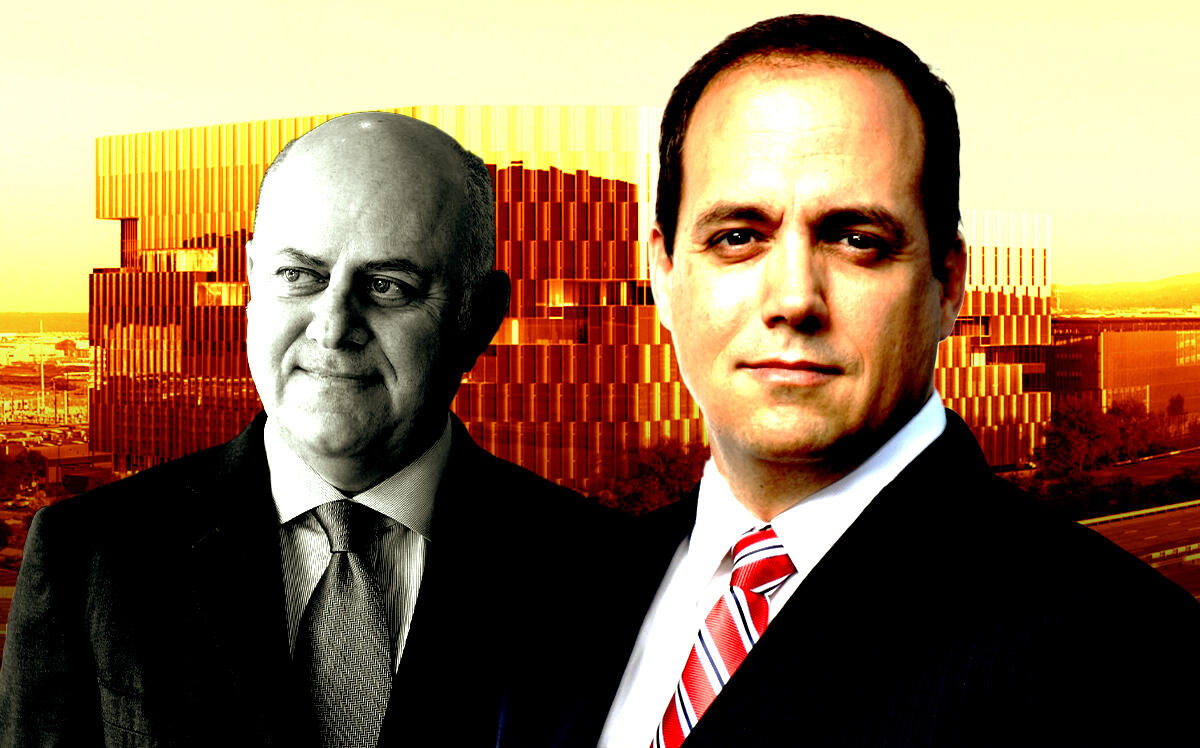 Alexandria Real Estate sued over potential SoMa project sale
Alexandria Real Estate sued over potential SoMa project sale
Trending
Alexandria cuts Prologis partnership on South SF project
Life sciences developer ditches entitled development, citing “macroeconomic environment”

The plans for a life science campus in South San Francisco looked perfect. The joint venture looked solid. The project was approved. But Alexandria Real Estate Equities walked away.
The Pasadena-based life science facilities developer has withdrawn from the project at 100 East Grand Avenue, leaving business partner Prologis in the lurch, the San Francisco Business Times reported.
The publicly traded real estate investment trust pulled out of the project before it was entitled, scuttling plans to build the research and development campus with San Francisco-based Prologis, owner of the 5.5-acre property, unidentified sources told the newspaper.
The city’s Planning Commission approved the nearly 600,000 square foot project this month.
In August, however, Alexandria had said in a regulatory filing with the SEC it was backing out of a development in California, but didn’t identify which project. The details matched the size of the 100 East Grand project.
Alexandria and Prologis declined to comment to the Business Times.
Alexandria reported a loss of $30 million in connection with the fizzled deal. The REIT would have developed the project with a ground lease. The charge represents Alexandria’s deposit, sources told the newspaper.
Whether Prologis will move forward with the project, or sell the property, isn’t clear.
Plans had called for a10-story, 309,000-square-foot office building and ground-floor cafe opposite an eight-story, 250,000-square-foot office building, divided by a public plaza, with a parking garage for more than 780 cars.
The project, designed by Portland-based ZGF, would resemble giant blue-gray cubes cut with descending landscape terraces on the east side of Highway 101. Nearly two thirds of the campus was slated for R&D, the rest for offices.
Alexandria, however, was afraid the project wouldn’t pencil out.
In its SEC filing, Alexandria said “the macroeconomic environment has deteriorated and negatively impacted the financial prospects for this project” since its initial investment, according to the Business Times.
The developer’s withdrawal from the project was noted during a third-quarter earnings call, though the project wasn’t identified. CFO Dean Shigenaga said Alexandria “did not own the land” and had “pretty significant cost incurred” due to entitlement work related to the site.
“The reason for not moving forward with the project was very specific to the financial outlook for the project,” Shigenaga said. “There was no lease release negotiation related to the project, to be clear. And beyond that … we’re not in a position to comment much further on the project.”
Shigenaga said that Alexandria leased some 2.7 million square feet of development and redevelopment space over the past three quarters. “So it’s very specific to the project,” he said.
Alexandria, a giant among life science developers nationwide, has 4 million square feet of real estate in South San Francisco. It’s now developing 300,000 square feet with Boston Properties at Gateway Commons, which last year scored biotech pioneer Genentech as a tenant.
An entitled 1.2-million-square-foot Alexandria project in San Francisco is currently on hold. The developer had sought to replace a 134,000-square-foot tennis club at 88 Bluxome Street, but said it no longer made financial sense. It now faces a legal challenge.
Alexandria has seen turnover at the top, with co-CEO Stephen Richardson stepping down in July, ending a 22-year run with the developer.
— Dana Bartholomew
Read more
 Alexandria Real Estate sued over potential SoMa project sale
Alexandria Real Estate sued over potential SoMa project sale
 Co-CEO resigns from Alexandria Real Estate
Co-CEO resigns from Alexandria Real Estate




